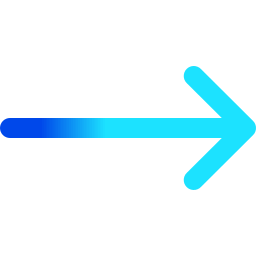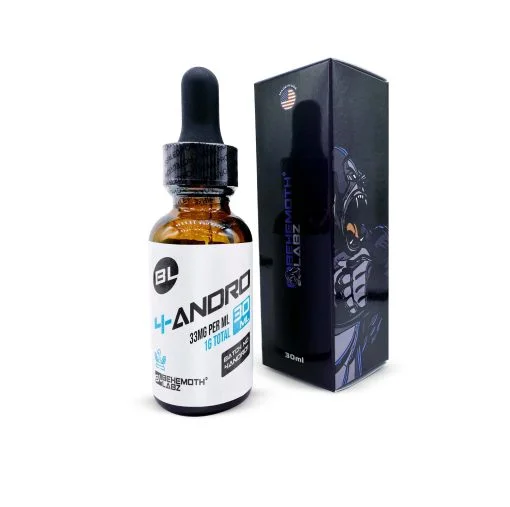Peptides
Gonadorelin vs. HCG: Key Similarities, Differences, And Research Applications
Gonadorelin and HCG are the two synthetic compounds that have sparked the attention of researchers in reproductive-related studies. Both have shown promise in modulating fertility-related parameters, but their mechanisms of action and structure differ in key ways. Whether you are a researcher or a scientist, understanding the science behind Gonadorelin and HCG is crucial before studying them.
In this detailed comparison blog, we have discussed all aspects related to gonadorelin and HCG, including their structure, mechanisms of action, and key similarities as well as distinctions. Read this blog and learn about these two compounds!
What Is Gonadorelin?
Gonadorelin is a laboratory-made peptide compound that consists of 10 amino acid molecules. It is developed as an analog to Gonadotropin-Releasing Hormone GnRH, which is responsible for the secretion of Gonadotropins (FSH or LH). In preclinical models, gonadotropins modulate reproductive system-related parameters.
Gonadorelin, being a synthetic analog, also modulates similar pathways in experimental settings. These pathways are associated with reproductive mechanisms, hormonal deficiencies, and delayed puberty in preclinical models.
What Is HCG?
HCG stands for Human Chorionic Gonadotropin. It is a glycoprotein, meaning it consists of protein and sugar. The placenta of pregnant organisms naturally produces it, stimulating ovulation (egg production). While in the masculine reproductive system, it plays a different role, mimicking Luteinizing Hormone (LH). It has two types: Recombinant HCG and urinary-derived HCG.
Recombinant HCG is derived from the laboratory by using the DNA technology process. Urinary-derived HCG is derived, collected, and purified from the urine of pregnant research models.
How Do Gonadorelin and HCG Work?
- Gonadorelin: After being administered to research models during fertility research, it may affect the pituitary gland. After affecting the pituitary gland during the experiment, it may influence the patterns associated with the secretion of Luteinizing Hormone (LH) and Follicle Stimulating Hormone (FSH). These two hormones then modulate parameters of delayed puberty and fertility issues of research subjects.
- HCG: After being administered to experimental models during trials, it binds with LH receptors in Leydig cells. This binding may trigger the patterns linked with testosterone production. In return, testosterone then influences multiple parameters in laboratory models during clinical trials.
Key Similarities Between Gonadorelin And HCG
Here are the key similarities between gonadorelin and HCG:
- Similar Hormonal Function Support:
They are used to support similar hormonal production, such as testosterone and ovulation, in laboratory models.
- Reproductive Research Use:
The research use of these peptides is similar. They are used to explore fertility-related studies in research models.
- Similar Method Of Administration:
Both can be administered via injection, though routes may differ depending on research protocols.
- Influence Gonadal Activity:
They both influence the gonadal activity in experimental models during laboratory studies. These gonadal activities are modulating testosterone production and ovulation in research subjects.
- Mimic Natural Hormonal Signal:
They both mimic natural hormone signals in laboratory models during studies. Gonadorelin may mimic gonadotropin-releasing hormone, while HCG may mimic LH in research models during laboratory studies. The hormones these peptides influence are naturally produced in organisms.
Similar Benefits of Gonadorelin and HCG
Here are the similar benefits these peptides demonstrate in research models:
- Reproductive Support:
They both support reproductive activities in organisms. They influence the pathways in the pituitary gland and the reproductive system, triggering hormone secretion. Such hormone secretion supports reproductive activities in organisms during laboratory trials.
- Enhances Libido and Sexual Health:
It is already mentioned that these peptides trigger reproductive hormones in organisms. Triggering these hormones enhances libido and improves sexual health in organisms during clinical studies.
- Triggers FSH and LH Activities:
These peptides may also influence the pathways linked with FSH and LH. For instance, gonadorelin influences FSH and LH through the pituitary gland, while HCG may directly trigger LH in organisms during laboratory studies.
Key Differences Between Gonadorelin And HCG
Here are the key differences between gonadorelin and HCG:
- Different Structure:
They both differ in their chemical and physical structure. Gonadorelin consists of 10 amino acid molecules in sequence, which is why it is known as a decapeptide. On the other hand, HCG is a large glycoprotein.
- Different Action Site:
The action site of gonadorelin is the pituitary gland in laboratory models. On the other hand, the action site of HCG is the reproductive organs of organisms.
- Primary Use/Main Function:
The primary use of gonadorelin is to influence parameters in the pituitary gland that are associated with LH and FSH secretion in research subjects. On the other hand, the primary function of HCG is to mimic LH in experimental subjects during clinical trials. In other words, HCG mainly focuses on modulating parameters linked with testosterone.
- Half-Life:
The half-life of gonadorelin ranges from a few minutes to hours. On the other hand, the half-life of HCG is up to 2-3 days. Comparing them, it is an obvious point that the half-life of HCG is more prolonged, meaning it is active in research models for a longer period.
Which One Is Better: Gonadorelin Or HCG
According to preclinical trials, both are good in their domains. For researchers, it is advised to opt for gonadorelin if they want to explore the impact of a peptide on the natural secretion of LH and FSH in research models during clinical studies. Gonadorelin may directly influence the patterns in the pituitary gland associated with FSH and LH.
On the other hand, researchers may choose HCG if they want to study a faster or more direct impact of a peptide on LH and FSH secretion in research subjects during clinical trials. HCG influences and mimics LH in experimental models, directly triggering the patterns linked with testosterone secretion.
Final Thoughts
Gonadorelin and HCG are synthetic peptides known for their influence on the reproductive systems of organisms. They share similarities as well as some differences. Belonging to the peptide family, supporting similar hormone patterns, and using a similar method of administration are the key similarities they share. On the other hand, they differ in chemical and physical structure. Choosing the best between them depends on research goals, objectives, and research environment. Other than that, various parameters are mentioned above, based on which researchers can make informed decisions.
Frequently Asked Questions (FAQs)
What is the best place to buy gonadorelin and HCG compounds online?
The best place to buy gonadorelin and HCG compounds is BehemothLabz. It is a place that is considered worth buying from. Similarly, it is a place where standards meet quality and excellence meet consistency. These qualities have made BehemothLabz a reliable and trustworthy place in the market. The products are third-party verified and are ready to deliver optimal results.
What are the main side effects of gonadorelin and HCG in research subjects?
The side effects observed during laboratory studies while using these peptides are nausea, fatigue, vomiting, injection site reactions, and mood changes. These side effects may vary from subject to subject and are dependent on various internal and external parameters.
What is the difference between recombinant and urinary-derived HCG?
Recombinant HCG is derived by using the DNA technology method in the laboratory. On the other hand, urinary-derived HCG is developed from the urine of pregnant female organisms.
What does gonadorelin do for organisms?
According to clinical studies, gonadorelin may mimic gonadotropin-releasing hormone in research subjects. In return, this mimicking may trigger LH and FSH secretion in research subjects during trials.
How long does it take for gonadorelin to work in research subjects?
According to preclinical studies, it may take from a few minutes to an hour for gonadorelin to work in research subjects.












